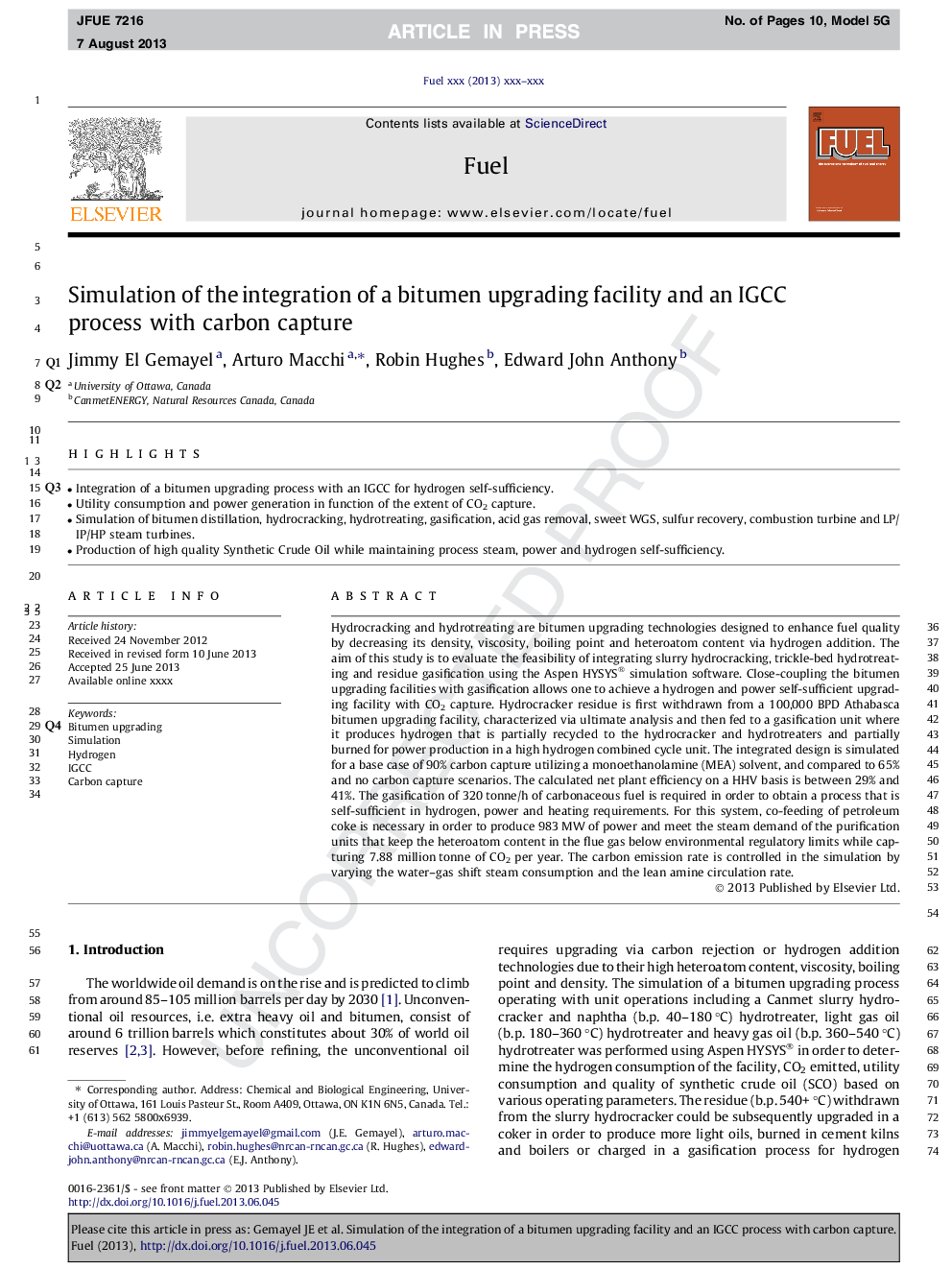| Article ID | Journal | Published Year | Pages | File Type |
|---|---|---|---|---|
| 10272279 | Fuel | 2014 | 10 Pages |
Abstract
Hydrocracking and hydrotreating are bitumen upgrading technologies designed to enhance fuel quality by decreasing its density, viscosity, boiling point and heteroatom content via hydrogen addition. The aim of this study is to evaluate the feasibility of integrating slurry hydrocracking, trickle-bed hydrotreating and residue gasification using the Aspen HYSYS® simulation software. Close-coupling the bitumen upgrading facilities with gasification allows one to achieve a hydrogen and power self-sufficient upgrading facility with CO2 capture. Hydrocracker residue is first withdrawn from a 100,000 BPD Athabasca bitumen upgrading facility, characterized via ultimate analysis and then fed to a gasification unit where it produces hydrogen that is partially recycled to the hydrocracker and hydrotreaters and partially burned for power production in a high hydrogen combined cycle unit. The integrated design is simulated for a base case of 90% carbon capture utilizing a monoethanolamine (MEA) solvent, and compared to 65% and no carbon capture scenarios. The calculated net plant efficiency on a HHV basis is between 29% and 41%. The gasification of 320 tonne/h of carbonaceous fuel is required in order to obtain a process that is self-sufficient in hydrogen, power and heating requirements. For this system, co-feeding of petroleum coke is necessary in order to produce 983 MW of power and meet the steam demand of the purification units that keep the heteroatom content in the flue gas below environmental regulatory limits while capturing 7.88 million tonne of CO2 per year. The carbon emission rate is controlled in the simulation by varying the water-gas shift steam consumption and the lean amine circulation rate.
Related Topics
Physical Sciences and Engineering
Chemical Engineering
Chemical Engineering (General)
Authors
Jimmy El Gemayel, Arturo Macchi, Robin Hughes, Edward John Anthony,
